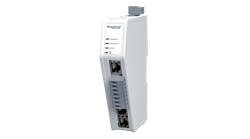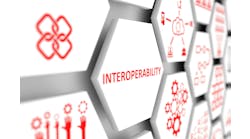The idea of creating smart factories is one whose time has come. The vision of the factory of tomorrow is one of machines, production lines, plants and entire supply chains that communicate with each other, in concert with information-technology (IT) systems, to enhance productivity, efficiency and flexibility.
The crucial step on the road to smarter manufacturing is convergence. That means gathering operational-technology (OT) data from machines and production lines and making it available to IT systems to analyze.
This OT-IT convergence allows manufacturers to make smarter decisions about equipment utilization to optimize performance and product quality, to streamline maintenance activities by predicting potential equipment failure ahead of time using condition-based monitoring and to schedule maintenance to minimize downtime.
The industrial Ethernet continues to evolve to support the terabytes of data that can be gathered from the multitude of disparate devices and networks in the OT world. The importance of connectivity and being able to gather data is the foundation for the digital transformation journey.
One of the key technologies for this evolution is time-sensitive networking (TSN), specifically developed to enhance standard Ethernet to provide the key functionality, performance and reliability necessary to achieve this network convergence enabling the digital transformation. The ability to run multiple industrial Ethernet protocols along with IT traffic on the same physical wire can be realized with TSN technology and, more important, allow critical control applications to run in parallel and seamlessly with generic configuration, programming and diagnostic applications.
More precisely, TSN technology addresses network functions at layer 2—the data-link layer—of the open systems interconnection (OSI) model for communications. Hence, it is only responsible for getting data from one place to another in a deterministic manner without looking at what the data is. What needs to be done with the data is typically handled at the higher-level layers that address application requirements. These are managed by specific protocols.
Since most industrial-Ethernet protocols were also created to make Ethernet deterministic, why do we need these and TSN? The answer is convergence. The combination of the required protocols with TSN creates a system that provides all the necessary application flexibility while allowing multiple traffic types to share the same network while being handled in a deterministic way.
Convergence provides the infrastructure to merge different traffic types onto a single network without affecting the determinism of critical control communications. This is fundamental to sharing operational insights and hence increasing process transparency across an enterprise, which can then be used to derive insights to optimize manufacturing facilities and entire organizations. TSN extends standard Ethernet allowing TSN-based devices to coexist with already installed Ethernet devices and networks.
There are four benefits to a converged network.
- Control devices that have previously been isolated to separated control networks, a past requirement to ensure deterministic performance, can now be addressable and accessible to other applications for use in advanced analytics and digital twins.
- Devices are becoming smarter and more complex, requiring management, which can now be accomplished over one connection, even while performing their primary functions.
- Architectures are simplified through the use of one network, improving ease of design and deployment and reducing challenges in troubleshooting.
- Costs are reduced through the simplification of architectures.
Successful standards are measured by the levels of adoption of their technology. The network of the future will be characterized by enhanced interconnectivity and openness in order to support seamless communications between an ever-expanding range of devices.





